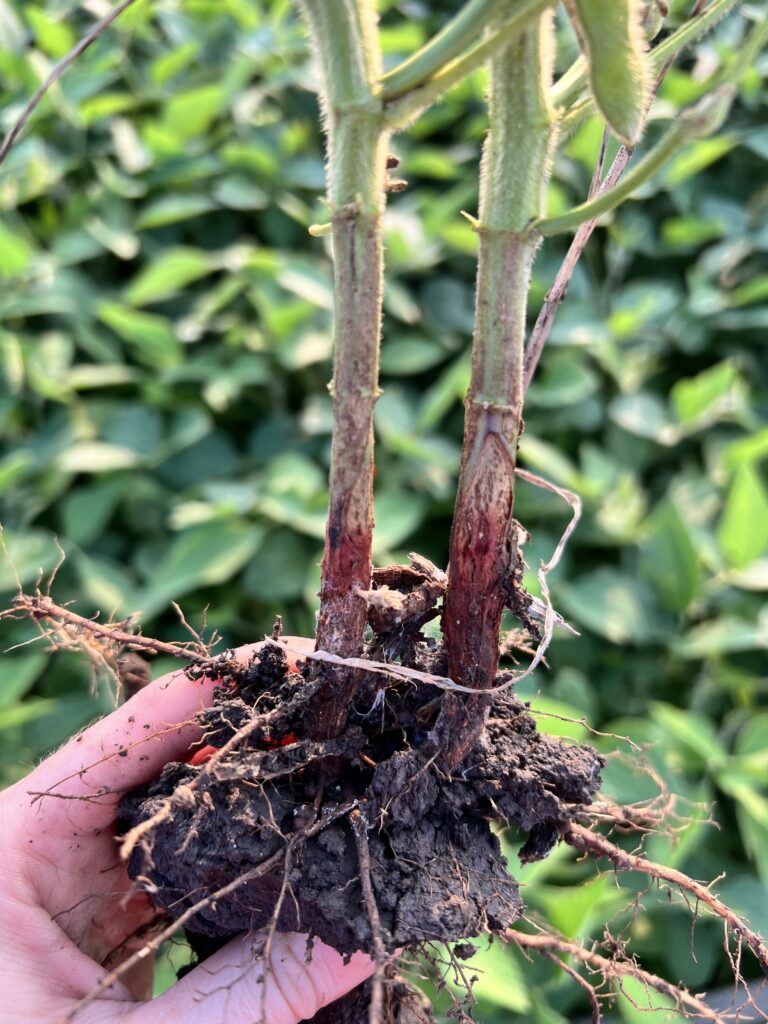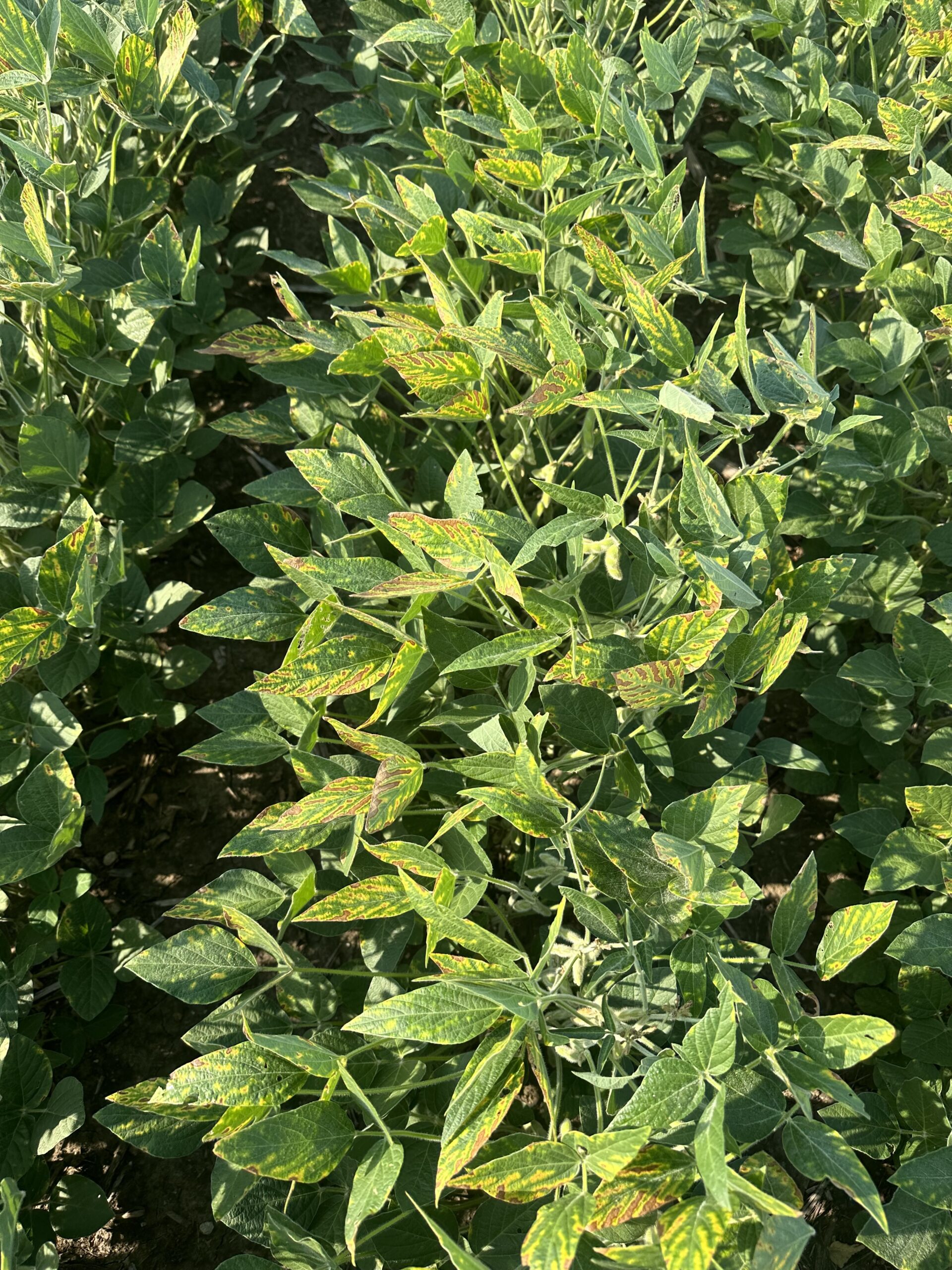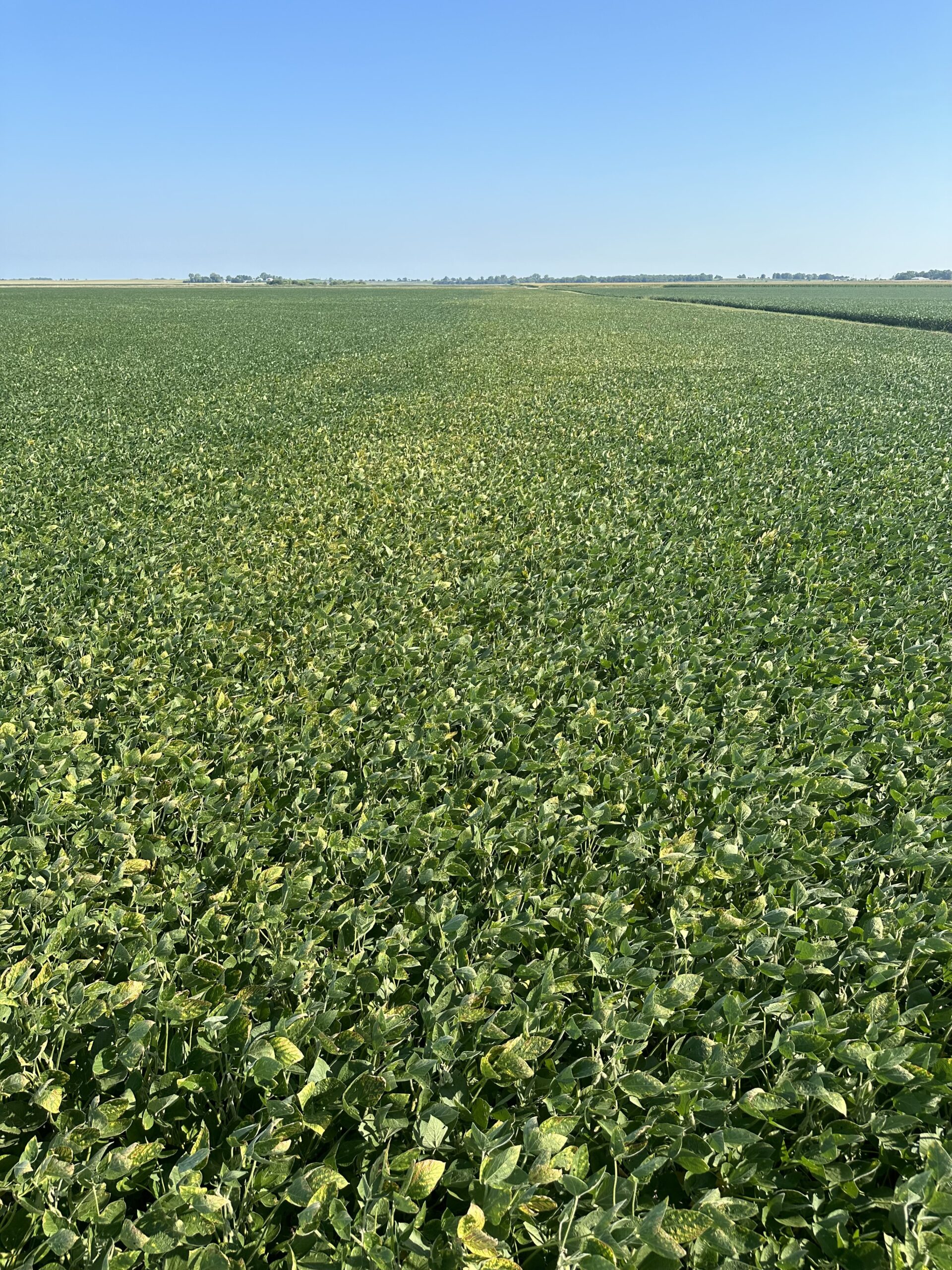This year has shown signs of multiple different issues appearing in soybeans. Last week offered the opportunity to evaluate several different scenarios. Knowing how each situation offers different ailments other than the common leaf symptoms will help you properly identify the cause. It’s important to look further than the leaf symptoms to properly identify the cause.
Sudden Death Syndrome or SDS is a soil-borne species of Fusarium that infects the roots. Early planting and cool wet soils can increase the likelihood of seeing SDS in a growing season. While the infection takes place early in the growing season, the symptoms do not show up until reproductive phases in soybeans resulting in flower and pod abortion along with leaf symptoms. Once the necrosis between the leaf is identified, the next symptoms to look for is a brown or tan discoloration of the inside stem or tap root. With SDS, the pith will remain white. A blue fungus may appear on the roots in severe infections. Common areas of SDS that show up in fields are entrance areas that have compaction or stressed areas of a field.
Brown Stem Rot or BSR also infects through a soil-borne fungus and will show symptoms in the month of August. The shared discoloration between the veins on leaves often shows up after a cool wet stretch followed by hot and dry conditions. When you split the stem of the plant, BSR will show brown areas in the pith.
The latest addition to share the leaf necrosis between the veins is Red Crown Rot. It has now found its way to the Midwest and Illinois growers have confirmed fields this growing season. Red Crown Rot is also a soil-borne fungus. When making a diagnosis, the stem will likely have small red balls at the base of the stem as well as white hyphae. The pith in the crown may also appear gray. The foliar symptoms also show up in the same time frame as SDS, BSR and Triazole Phytotoxicity.
Certain soybean varieties can have a sensitivity to Triazole fungicides. This sensitivity can be compounded by hot and dry conditions that limit the movement out of the leaf. The response is the same shared leaf symptoms as the previously mentioned diseases. It also shows up around the same time one can begin to find diseases in soybean fields. The standout differences would be more of a pattern tied to a misapplication. The entire field can be affected, which usually does not line up with fungal pathogens. Outside of the leaf symptoms, the remainder of the plant will be healthy such as the roots and pith.
Triazole Phytotoxicity – Photos provided by Kris Ehler
Identifying the cause of the leaf symptoms will help growers in the future to formulate a plan of action. With SDS, growers can utilize varieties with good tolerance and seed treatments for protection. If the field has a history of BSR, using a variety that has the BSR resistance gene would be recommended. Red Crown Rot does not offer many management options, but knowing the field history can help once identified. Documenting varieties with Triazole sensitivity can help growers avoid the unsightly foliar symptoms that could occur during hot and dry periods.






 and then
and then
Seeing a lot of potassium issues too that folks are thinking are SDS. The RCR thing has been in the conversation for a while- we’ve had it for a long time in WC Illinois. Rotation and avoiding alfalfa help. Saltro also can help. ILSoyadvisor posted on that a few times over the past years. Not sure why people are thinking sky is falling now.